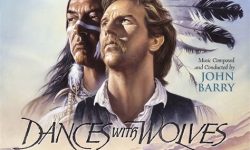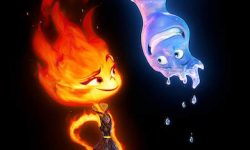How Long is The Movie Vertigo (1958)
Explore Hitchcock’s masterpiece, Vertigo (1958), from its duration and famous scenes to its cinematic techniques and thematic exploration. Dive into analysis and reception.Are you a fan of classic cinema? Have you ever wondered about the length of the iconic movie Vertigo (1958) directed by Alfred Hitchcock? In this blog post, we will explore the various aspects of this timeless film, from its duration to its impact on cinematic history. We will delve into famous scenes, the implications of its length, and the cinematic techniques employed by Hitchcock that continue to influence filmmakers today. Additionally, we will discuss the reception and impact of Vertigo (1958) and its status as a masterpiece within Hitchcock’s vast body of work. We will also analyze the themes explored, the characters portrayed, and the enigmatic ending that has left audiences captivated for decades. Join us as we unravel the complexities and brilliance of Vertigo (1958) and gain a deeper appreciation for this cinematic gem.
Intro to the movie Vertigo (1958)
Vertigo is a classic suspense thriller directed by the legendary Alfred Hitchcock. Released in 1958, the movie is often hailed as one of Hitchcock’s finest works. Set in San Francisco, the film follows the story of a retired detective suffering from acrophobia who is hired to tail the wife of a friend and uncovers a web of deceit, obsession, and manipulation. With its intricate plot, stunning visuals, and psychological depth, Vertigo has secured its place as a timeless masterpiece in the history of cinema.
From the haunting score by Bernard Herrmann to the breathtaking cinematography, every aspect of Vertigo is meticulously crafted to draw viewers into its eerie atmosphere. The film’s exploration of themes such as identity, perception, and the complexities of human relationships adds layers of depth and intrigue to the narrative.
As we delve into the myriad of elements that make Vertigo a cinematic gem, it becomes apparent that the movie is more than just a thrilling mystery; it’s a profound exploration of the human psyche and the nuances of human behavior.
With its captivating storytelling and unparalleled craftsmanship, Vertigo continues to captivate and mesmerize audiences, solidifying its status as a true cinematic masterpiece.
Duration of the movie Vertigo (1958)
Alfred Hitchcock’s iconic film Vertigo, released in 1958, has a duration of approximately 128 minutes. This length allows for the intricate development of the plot and characters, as well as the exploration of the film’s central themes.
The extended duration of Vertigo enables Hitchcock to create a slow-burning, atmospheric thriller that immerses audiences in the complex psychological dynamics of the characters. The deliberate pacing of the film adds to the sense of unease and suspense, drawing viewers into the narrative.
Moreover, the extended duration allows for the meticulous attention to detail in the film’s cinematography, set design, and soundscapes, contributing to the overall immersive experience for the audience. Hitchcock’s masterful use of pacing and duration in Vertigo has solidified the film as a timeless classic in the realm of suspense cinema.
The film’s duration is a crucial element in shaping the overall viewing experience, enhancing the emotional impact and leaving a lasting impression on audiences.
Famous scenes in the movie Vertigo (1958)
One of the most famous scenes in the movie Vertigo (1958) is the iconic rooftop chase sequence. This thrilling and suspenseful scene is a standout moment in the film, as the protagonist, Scottie, pursues the mysterious woman, Madeleine, across the rooftops of San Francisco. The use of suspenseful music and dizzying camera angles adds to the tension of the chase, making it a memorable and impactful scene.
Another famous scene in Vertigo is the mesmerizing dream sequence. This surreal and haunting sequence takes place in a swirling, kaleidoscopic dream world, reflecting Scottie’s inner turmoil and obsession with Madeleine. The dream sequence is visually stunning and psychologically intriguing, offering a unique and unforgettable cinematic experience.
The climactic sequence in the bell tower of the mission church is also one of the most famous scenes in Vertigo. This intense and heart-pounding scene builds to a shocking and tragic climax, as Scottie experiences a moment of devastating realization. The dramatic and emotional impact of this scene has cemented it as one of the most significant moments in the film.
Lastly, the mesmerizing and dizzying visuals of the iconic vertigo effect that are used throughout the film are another reason some scenes in Vertigo are famous. This innovative visual technique, also known as the dolly zoom, creates a disorienting and unsettling sensation, effectively capturing Scottie’s sense of vertigo and unease. These scenes are not only visually striking but also thematically rich, adding depth and complexity to the film.
Implications of the movie’s length
Alfred Hitchcock’s classic film Vertigo (1958) is renowned for its lengthy runtime, coming in at over two hours. This extended duration has significant implications for the viewer’s experience, as well as for the storytelling and pacing of the film.
First and foremost, the length of the movie allows for a more in-depth exploration of the complex characters and their motivations. With more time to develop the narrative, Hitchcock is able to delve into the psychological complexities of the protagonist, Scottie, as he becomes increasingly obsessed with the enigmatic woman, Madeleine. This deep character development adds layers of nuance and depth to the story, drawing the audience further into the film’s gripping narrative.
Additionally, the extended duration of Vertigo allows for a more deliberate and methodical pacing. This deliberate pacing strategically builds tension and suspense, heightening the audience’s emotional investment in the unfolding drama. The film’s length also enables Hitchcock to craft meticulously detailed scenes, enhancing the visual spectacle of the movie and immersing viewers in its captivating world.
Ultimately, the implications of Vertigo’s length are far-reaching, shaping the movie into a masterful exploration of obsession, desire, and psychological intrigue. Hitchcock’s deliberate use of time creates a rich and immersive viewing experience, underscoring the enduring impact of this cinematic masterpiece.
Cinematic techniques used in Vertigo (1958)
Alfred Hitchcock’s Vertigo (1958) is a film known for its innovative and influential use of cinematic techniques. One of the most prominent techniques used in the film is the dolly zoom, also known as the Vertigo effect, which creates a disorienting sense of space and perspective. This technique is used to convey the protagonist’s feelings of vertigo and anxiety, as well as to visually represent the themes of obsession and psychological disorientation.
Another notable cinematic technique used in Vertigo is the use of color and lighting to convey emotional states and psychological themes. The film’s use of lush, saturated colors and dramatic lighting creates a dreamlike, hypnotic atmosphere that mirrors the protagonist’s mental state, as well as the film’s exploration of themes of illusion and identity.
Hitchcock also employed innovative camera angles and movement to create a sense of unease and tension throughout the film. Through the use of low angles, high angles, and unconventional framing, Hitchcock manipulates the audience’s perspective and creates a sense of unease and disorientation, mirroring the protagonist’s own feelings of confusion and instability.
Overall, Vertigo (1958) is a masterclass in the use of cinematic techniques to create a psychological and emotional impact on the audience. Hitchcock’s innovative use of the dolly zoom, color and lighting, and camera angles and movement all contribute to the film’s enduring legacy as a groundbreaking work of cinematic art.
Reception and impact of Vertigo (1958)
Alfred Hitchcock’s Vertigo (1958) is often regarded as one of the greatest films in the history of cinema, and its reception over the years has certainly reflected this sentiment. Initially, the film received a mixed response from critics and audiences alike, with some praising its innovative storytelling and mesmerizing visuals, while others found it to be overly complex and disorienting.
However, as time went on, Vertigo (1958) garnered a cult following and is now widely considered a masterpiece. Its impact on subsequent filmmakers and the world of cinema as a whole is immeasurable. The film’s use of cinematic techniques such as dolly zoom and point-of-view shots has been widely studied and emulated by directors across the globe.
The film’s exploration of themes such as obsession, identity, and the nature of reality has left a lasting impression on audiences, and its influence can be seen in countless other works of art. In terms of its reception, Vertigo (1958) has been the subject of numerous critical reevaluations, with many contemporary critics praising its bold storytelling and powerful symbolism.
Overall, the impact of Vertigo (1958) on the world of cinema cannot be overstated, and its reception has evolved significantly over the years, solidifying its status as a true cinematic classic.
Vertigo (1958) as a Hitchcock masterpiece
Alfred Hitchcock’s 1958 film, Vertigo, is often considered a masterpiece in the world of cinema. The film’s intricate storytelling, compelling characters, and innovative cinematography have solidified its place in film history as one of Hitchcock’s greatest works.
One of the reasons why Vertigo is seen as a masterpiece is due to Hitchcock’s meticulous attention to detail. Every shot, every frame, and every line of dialogue in the film feels purposeful and meticulously crafted, showcasing Hitchcock’s unparalleled skill as a director. The film’s intricate plot twists and psychological depth also contribute to its status as a masterpiece, as it continues to captivate audiences and critics alike decades after its release.
Furthermore, Vertigo’s exploration of themes such as obsession, identity, and illusion make it a standout work in Hitchcock’s esteemed filmography. The film’s haunting score, combined with its visually stunning cinematography, creates an immersive and unforgettable viewing experience that solidifies its status as a masterpiece.
In conclusion, Vertigo’s lasting impact on cinema, its innovative storytelling techniques, and its ability to provoke thought and emotion make it a true masterpiece in the world of cinema, showcasing Alfred Hitchcock’s unparalleled skill as a filmmaker.
Themes explored in Vertigo (1958)
One of the most enduring and intriguing themes explored in Vertigo (1958) is the idea of obsession and manipulation. The film delves into the complexities of the human mind, portraying the lengths to which individuals will go to control and possess others. This theme is evident through the character of Scottie, whose unhealthy fixation on Madeleine drives him to extreme measures.
Another prominent theme in the movie is the concept of identity and duality. The character of Madeleine embodies this theme, as she grapples with her own conflicting identities. This duality is brilliantly depicted through the use of mirrors and reflections, symbolizing the internal struggle of the characters.
Furthermore, Vertigo (1958) explores the theme of loss and longing. The film captures the profound sense of emptiness and despair that comes with losing a loved one. The haunting beauty of San Francisco serves as a backdrop to the characters’ internal turmoil, highlighting the pervasive sense of longing that permeates the narrative.
Lastly, the theme of fate and predestination is a prevalent motif in the movie. The sense of inevitability and fatalism looms over the characters, as they grapple with the inescapable forces that shape their lives. This theme adds a layer of complexity to the narrative, inviting the audience to ponder the notion of free will versus destiny.
Exploring the characters in Vertigo (1958)
One of the most fascinating aspects of Alfred Hitchcock’s masterpiece, Vertigo (1958), is the complex and enigmatic characters that drive the narrative. From the brooding and troubled Scottie Ferguson to the mysterious and alluring Madeleine Elster, each character in the film is a rich and multi-layered creation that adds depth and intrigue to the story.
At the heart of the film is Scottie Ferguson, portrayed by the legendary James Stewart. Scottie is a retired detective who is struggling with acrophobia and his own inner demons. His journey through the film is a captivating exploration of obsession, love, and psychological turmoil.
Opposite Scottie is the enigmatic Madeleine Elster, played with haunting elegance by Kim Novak. Madeleine’s enigmatic presence and elusive nature firmly entwine Scottie in a web of obsession and intrigue, as he becomes fixated on her and dedicates himself to unraveling the mystery surrounding her.
Furthermore, the supporting characters in the film, such as Midge Wood and Gavin Elster, add further layers to the narrative, each with their own motives and complexities that contribute to the film’s overarching themes of obsession, identity, and reality.
Analysis of the ending in Vertigo (1958)
As the movie comes to a close, the audience is left with a sense of ambiguity and unease. The ending of Vertigo leaves many questions unanswered, and this deliberate choice by Alfred Hitchcock has sparked countless discussions and interpretations over the years.
Some viewers argue that the ending is a reflection of the protagonist’s ultimate disillusionment and despair, while others believe it serves as a manifestation of the film’s themes of obsession, manipulation, and the fragility of identity. It’s important to note that Hitchcock intentionally leaves many details open to interpretation, allowing the audience to grapple with the film’s complexities and draw their own conclusions.
The ending of Vertigo is a masterclass in cinematic storytelling, as it challenges the traditional notion of closure and neatly tied-up conclusions. Hitchcock’s decision to leave the audience with lingering questions and uncertainties is a testament to his willingness to push the boundaries of narrative structure and provoke introspection in his viewers.
Ultimately, the ending of Vertigo is a thought-provoking culmination of the film’s exploration of human psychology, identity, and the darker aspects of human nature. It’s a fitting conclusion to a cinematic masterpiece that continues to captivate and mystify audiences to this day.
Frequently Asked Questions
What is the duration of the movie Vertigo (1958)?
The duration of the movie Vertigo (1958) is approximately 2 hours and 8 minutes.
What are some famous scenes in the movie Vertigo (1958)?
Some of the famous scenes in the movie Vertigo (1958) include the rooftop chase at the mission, the nightmare sequence, and the pivotal scene at the bell tower.
What are some cinematic techniques used in Vertigo (1958)?
Vertigo (1958) uses a variety of cinematic techniques, including dolly zoom, split-screen, and point-of-view shots to create a sense of disorientation and psychological tension.
What is the reception and impact of Vertigo (1958)?
While initially receiving mixed reviews, Vertigo (1958) has since become recognized as one of Alfred Hitchcock’s masterpieces and has had a significant impact on the film industry.
What are some themes explored in Vertigo (1958)?
Themes explored in Vertigo (1958) include obsession, identity, and the nature of reality, as well as the psychological effects of trauma and loss.
What is the significance of the movie’s length?
The length of Vertigo (1958) allows for a deep exploration of its complex characters, themes, and narrative, contributing to its lasting impact and acclaim.
How is Vertigo (1958) regarded as a Hitchcock masterpiece?
Vertigo (1958) is regarded as a Hitchcock masterpiece due to its innovative storytelling, compelling characters, and groundbreaking use of cinematic techniques, solidifying its place in film history.



